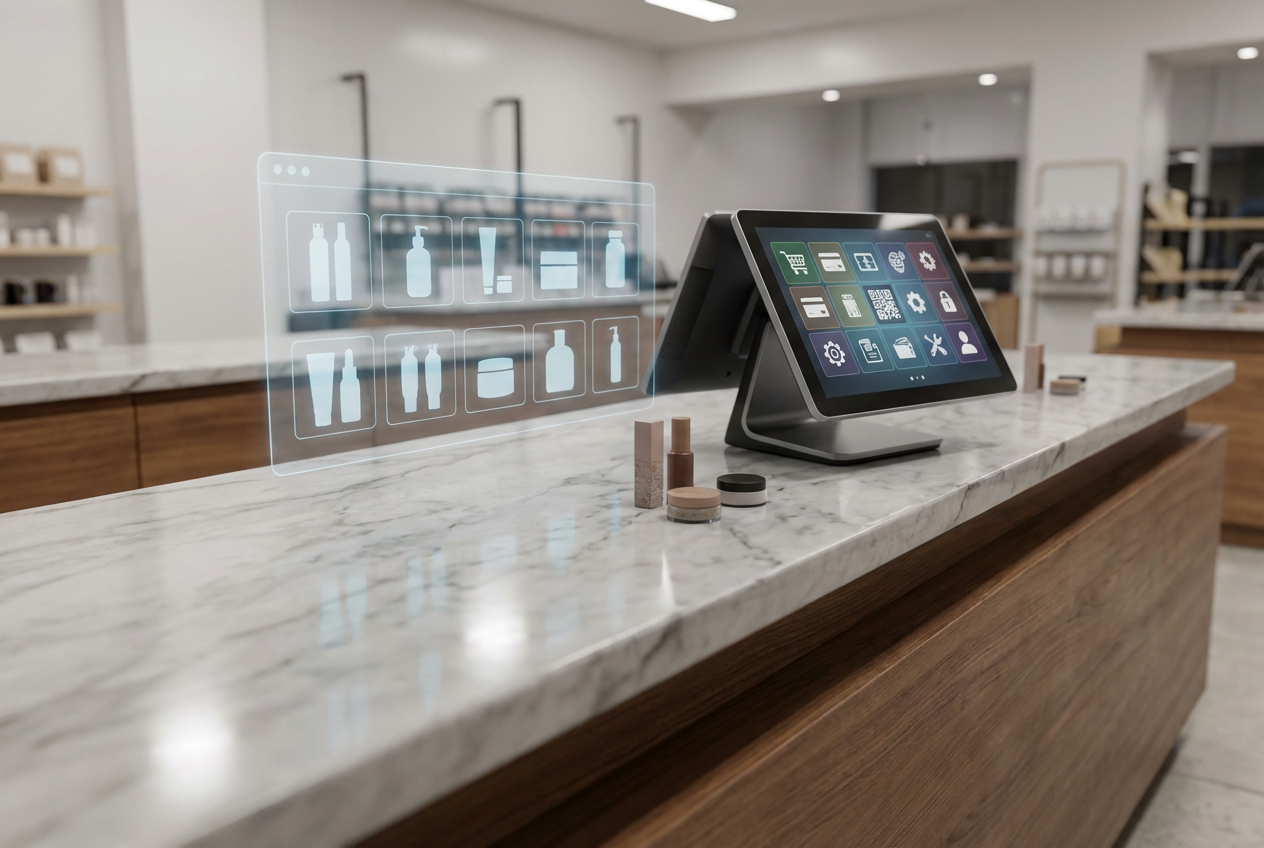In the world of retail, few institutions have had as much cultural, economic, and historical impact as the department store. From the golden age of urban shopping to today’s hybrid retail models, department stores have been central to how people shop, socialize, and engage with brands.
But what exactly is a department store? How did it begin, what makes it different from other store formats, and what role does it play in the modern retail landscape?
In this article, we’ll explore the basic definition of a department store, its origin, key characteristics, evolution, and relevance in 2025 and beyond.
What Is a Department Store? A Simple Definition
A department store is a large retail establishment that offers a wide range of consumer goods organized into separate departments. Each department focuses on a specific category of merchandise, such as men’s and women’s clothing, homeware, cosmetics, electronics, shoes, toys, and more.
Unlike specialty stores that concentrate on one product type, department stores are designed to provide a one-stop shopping experience. Customers can browse multiple categories and brands under one roof, with centralized payment counters and customer services enhancing convenience.
Core Characteristics:
- Multiple product categories under one roof
- Distinct departments for organization and ease of navigation
- Centralized management and billing
- Often housed in multi-story buildings
- Typically located in urban areas or malls
The History of Department Stores
Origins in the 19th Century
The first modern department stores emerged in Europe in the mid-19th century. One of the earliest and most influential examples is Le Bon Marché in Paris, which opened in 1852. It revolutionized retail by combining wide product assortments, fixed pricing, and an elegant shopping environment.
In the United States, stores like Macy’s (founded in 1858), Marshall Field’s, and Sears pioneered the department store format, offering urban consumers a modern shopping experience that emphasized selection, service, and style.
Golden Age (1900s–1950s)
This was the heyday of department stores. Retail palaces were constructed in major cities, offering everything from fashion and furniture to fine dining and entertainment. Shopping became a leisure activity, and department stores played a major role in shaping urban culture.
Challenges and Adaptation (1970s–2000s)
The rise of shopping malls, big-box stores, and eCommerce in the late 20th century began to challenge the department store’s dominance. Many chains closed or merged. However, several stores adapted by investing in private labels, experiential retail, and international expansion.
►►► Optimal solution set for businesses: Multi store POS, Next-gen POS, Inventory Management Software (MSI), Self Service, Automation, Backorders
Modern Department Stores: 2025 and Beyond
Today, department stores are far more than physical locations. With the growth of omnichannel retail, modern department stores integrate online and offline shopping, offering services like:
- Buy Online, Pick Up In Store (BOPIS)
- Personalized digital catalogs
- Loyalty apps and CRM
- In-store events and tech-enhanced fitting rooms
Some leading department stores like Nordstrom, Selfridges, and Harrods have positioned themselves as lifestyle destinations, offering not just goods but immersive brand experiences.
Department Store vs. Other Retail Formats
Let’s break down how department stores compare to other retail types:
| Feature | Department Store | Specialty Store | Big-Box Retailer | Flagship Store |
|---|---|---|---|---|
| Product Variety | Wide range | Limited/specific | Broad but more functional | Brand-specific |
| Size | Large, multi-story | Small to medium | Large, warehouse-like | Varies |
| Atmosphere | Premium to mainstream | Focused experience | Efficiency-based | Branded immersion |
| Location | Urban centers, malls | Streets, malls | Suburban zones | Key urban hubs |
| Goal | One-stop shopping | Niche targeting | High volume, low cost | Brand storytelling |
Why Do Department Stores Matter Today?
Despite facing disruption, department stores still serve important roles in retail:
1. Curated Shopping Experience
Unlike online platforms with endless options, department stores offer curated product selections, making it easier for shoppers to discover new trends or trusted brands.
2. Touch-and-Feel Factor
Some products, like apparel or makeup, are best experienced in person. Department stores let customers try before they buy, with assistance from knowledgeable staff.
3. Brand Visibility
For emerging and luxury brands, being stocked in a reputable department store enhances credibility and reach.
4. Community and Events
Modern department stores are integrating cafés, beauty salons, co-working spaces, and pop-up events to turn shopping into a social experience.
Notable Department Store Chains Worldwide
Here are a few prominent department store examples that shaped—or are reshaping—the industry:
| Brand | Region | Unique Trait |
|---|---|---|
| Macy’s | USA | Iconic holiday campaigns and NYC flagship |
| Nordstrom | USA/Canada | Focus on customer service and omnichannel |
| Selfridges | UK | Innovation, sustainability, and art |
| Galeries Lafayette | France | Luxury and fashion curation |
| Takashimaya | Japan | Blend of modern and traditional retail |
| El Corte Inglés | Spain | Broadest category range in Southern Europe |
| Isetan | Japan | High-end, fashion-forward department store |
Department Stores and Technology: The New Frontier
To stay competitive, many department stores are leveraging technology in various ways:
1. POS Systems and Self-Checkout
Advanced Point of Sale (POS) systems help streamline checkout, track inventory, and integrate with online orders.
2. Smart Mirrors and AR Fitting Rooms
Stores like Neiman Marcus use smart mirrors that let shoppers try on clothes virtually or view items in different colors and lighting.
3. Mobile Apps and Loyalty Programs
Apps enable mobile checkout, personalized discounts, and digital receipts—adding convenience and engagement.
4. Data-Driven Merchandising
Department stores now use customer data analytics to stock the right products in the right locations at the right time.
Challenges Facing Department Stores
Despite evolution, challenges remain:
- Online Competition: Giants like Amazon threaten physical retail with faster delivery and competitive pricing.
- Changing Consumer Habits: Younger shoppers prefer experience over goods and often opt for DTC brands.
- High Operational Costs: Maintaining large stores in prime locations is expensive.
- Inventory Complexity: Managing thousands of SKUs across departments requires sophisticated systems.
The Future of Department Stores
The department store of the future won’t look exactly like the one of the past—but it will still play a vital role if it can:
- Focus on experience-first retail
- Become digitally integrated and mobile-friendly
- Personalize service through AI and CRM tools
- Embrace sustainability and ethical sourcing
- Use stores as fulfillment and return hubs
Stores like Zara, Nordstrom, and Bloomingdale’s are already experimenting with these concepts.
Conclusion: A Retail Legacy Reinvented
To sum it up, a department store is far more than just a large building with multiple shopping departments. It is a cultural and commercial institution that has continuously adapted to meet changing consumer needs. While it faces steep competition from eCommerce and niche retailers, department stores still offer unique value through experience, curation, and customer service.
Understanding the basic definition of a department store allows us to appreciate how this retail format has evolved—and why, in 2025 and beyond, it continues to matter more than ever.
Above is the department store definition and some information related to the department store. If you need assistance or essential information for your business, feel free to contact us.
►►► Optimal solution set for businesses: Shopify POS, Magento POS, BigCommerce POS, WooCommerce POS, NetSuite POS, E-Commerce POS



